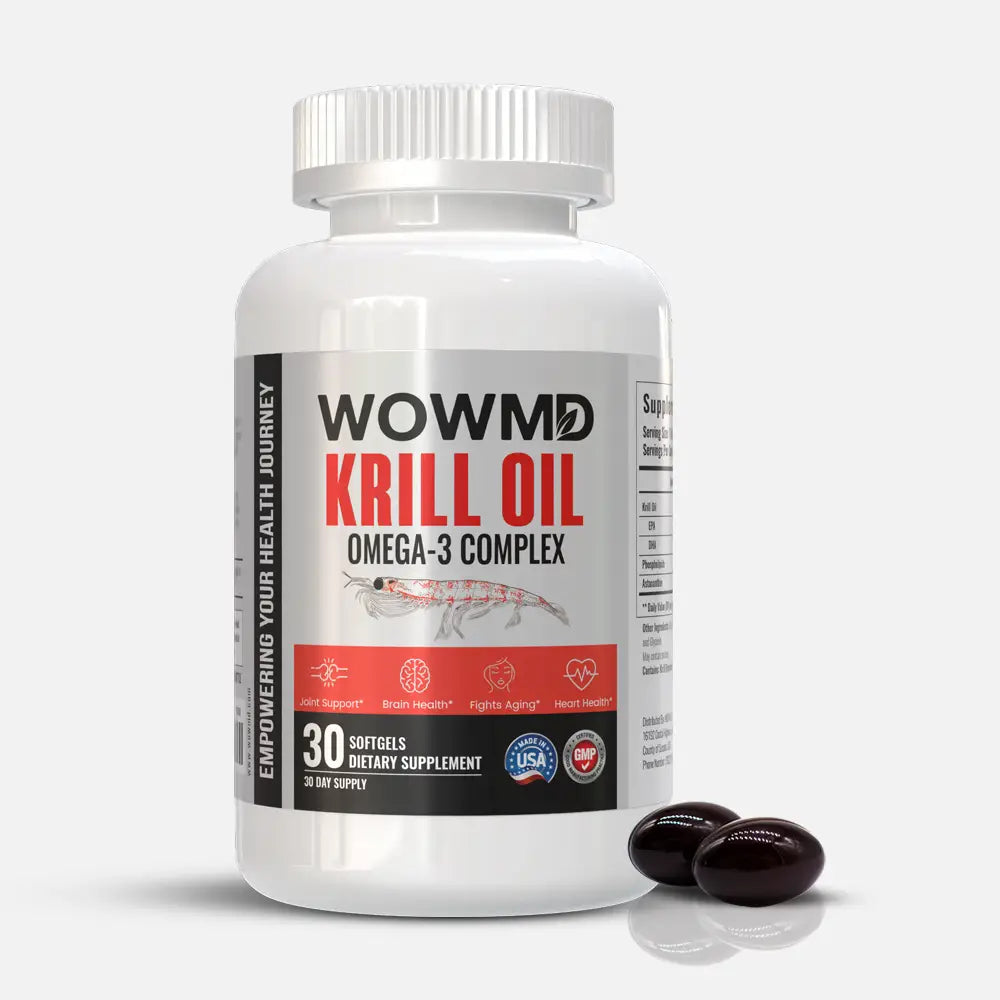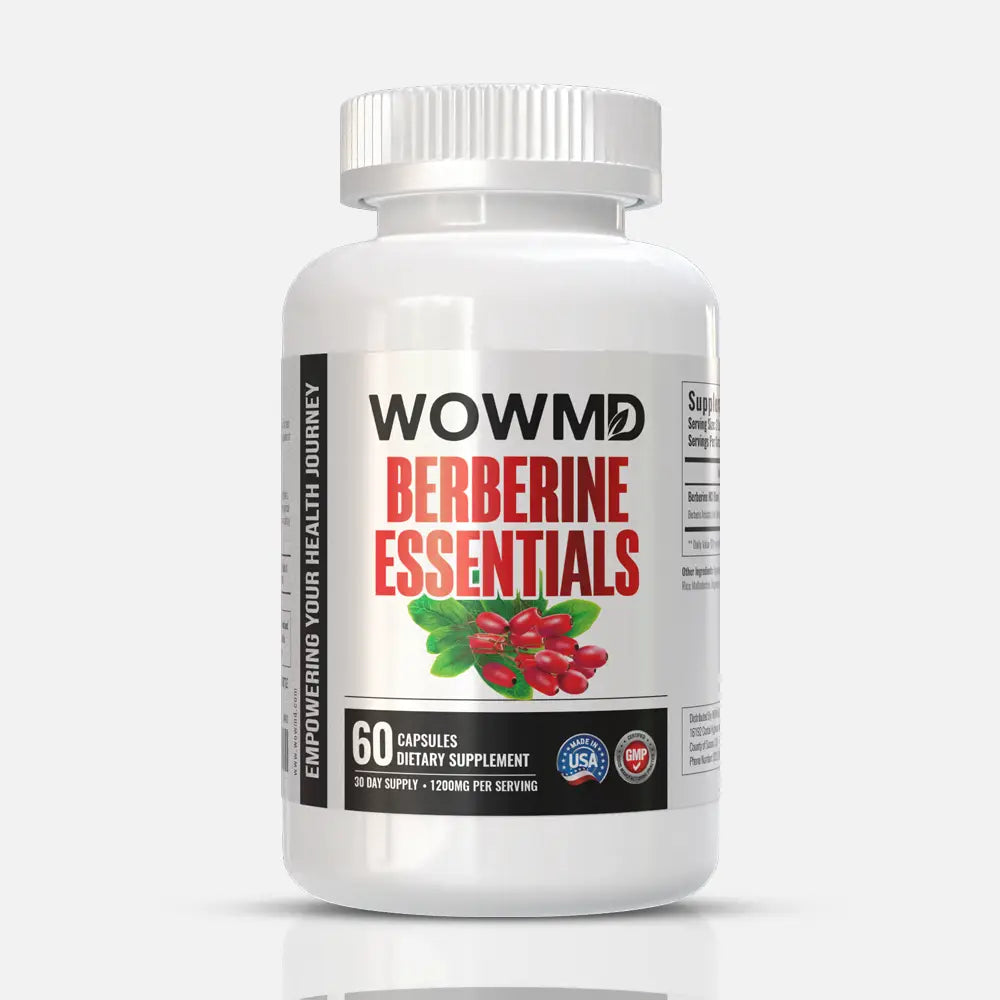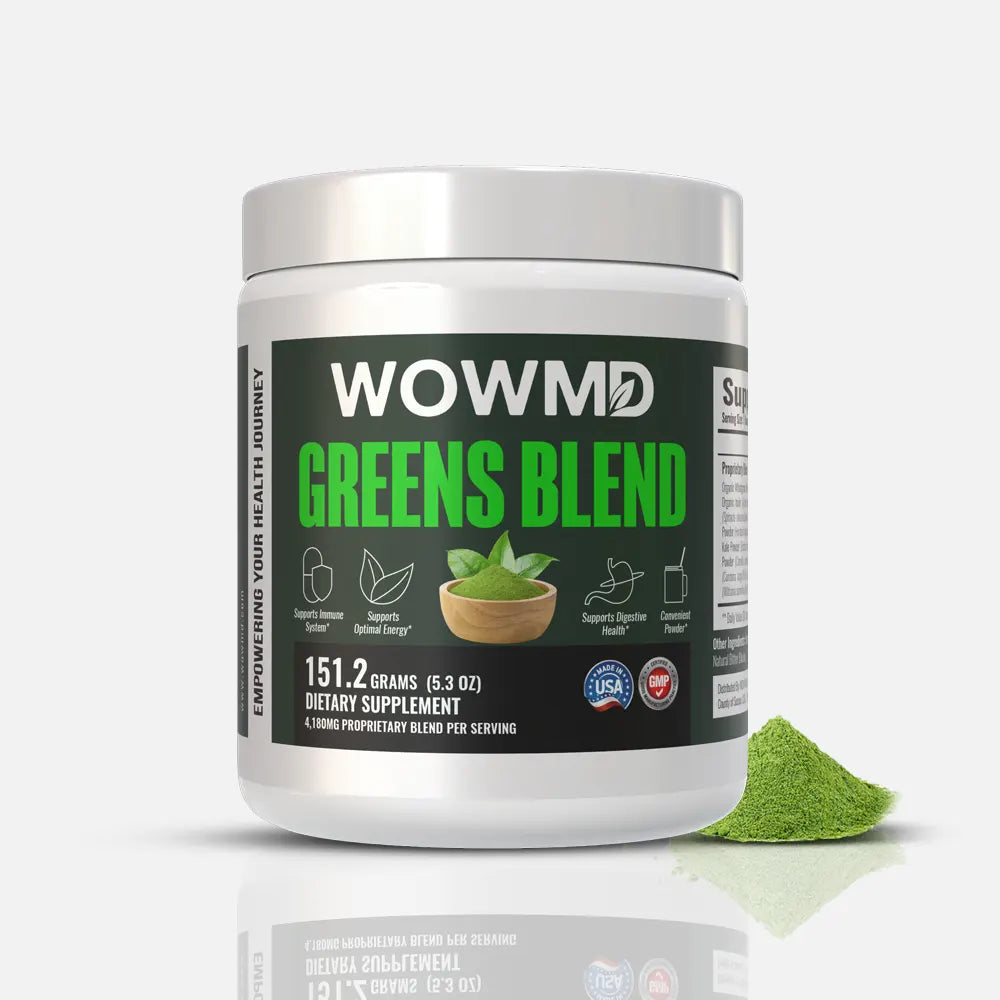Vitamin D Deficiency: Symptoms, Causes, and Treatment
Vitamin D deficiency is on the rise in Western countries. Learn more about the symptoms and causes of vitamin D deficiency, as well as how to treat it here.

Table of contents
Vitamin D plays a vital role in keeping your body functioning at its best. Known as the "sunshine vitamin," it helps strengthen your bones, supports your immune system, and even influences your mood.
Despite its importance, vitamin D deficiency is a widespread issue, affecting millions of people worldwide. Surprisingly, the symptoms can often go unnoticed, only becoming apparent when they start to impact your daily life.
Low levels of vitamin D can lead to a range of health problems, from persistent fatigue and frequent infections to weaker bones and even mood swings. While the effects might seem alarming, the good news is that this condition is both preventable and treatable.
By recognizing the signs early and understanding what causes vitamin D deficiency, you can take steps to protect your health. In this article, we’ll guide you through everything you need to know about vitamin D deficiency.
You’ll learn how to identify its symptoms, understand its root causes, and explore effective treatment and prevention strategies. Whether you’re looking for ways to boost your vitamin D levels or simply want to stay informed, this guide offers practical advice to help you take control of your well-being. Here is everything you need to know!
Key Takeaways
- Vitamin D is essential for bone health, immunity, and mood regulation. Deficiency can cause fatigue, pain, and illness.
- Limited sun exposure and poor diets are major causes of deficiency; certain groups are at higher risk.
- Regular testing, supplements, and moderate sun exposure can help maintain healthy vitamin D levels.
- Early recognition and treatment significantly improve health outcomes and prevent long-term complications.
What Is Vitamin D Deficiency?
Vitamin D deficiency happens when your body doesn’t have enough vitamin D to support its essential functions. Your body makes vitamin D when your skin is exposed to sunlight, but it also comes from certain foods and supplements.
Without enough of it, your bones, immune system, and overall health can suffer. This condition is more common than you might think.
People at risk include those with limited sun exposure, darker skin tones, poor diets, or certain medical conditions. Recognizing these risk factors can help you take proactive steps to maintain adequate vitamin D levels and protect your health.
In this video, we explore the benefits of vitamin D, its role in bone and immune health, and how sunlight, diet, and supplements help maintain healthy levels.
Symptoms of Vitamin D Deficiency
Vitamin D is formed when sunlight touches your skin. Your body produces this essential nutrient quite naturally. Early deficiency symptoms often remain subtle and unnoticed. Many people have low levels without realizing it. Here are 14 signs of vitamin D deficiency that might indicate you’re not getting enough of this crucial nutrient:
- Frequent Illnesses - If you’re constantly catching colds or dealing with infections, your low vitamin D levels might be to blame. Vitamin D supports the immune system, helping it fight off illnesses.
- Fatigue - One of the most common symptoms of low vitamin D is feeling tired all the time. Even after a good night’s sleep, you may still struggle to stay energized.
- Bone and Back Pain - Vitamin D helps your body absorb calcium. Without it, your bones can become weak, leading to aches and pains, especially in your lower back.
- Hair Loss - Weird symptoms of vitamin D deficiency, like hair thinning or bald patches, might surprise you. Alopecia areata, a condition causing severe hair loss, has been linked to low vitamin D levels.
- Mood Changes - A deficiency of vitamin D may cause depression and anxiety, and it influences brain health.
- Slow Wound Healing - If cuts or surgical wounds take longer to heal, your body might be struggling with low vitamin D. This nutrient is essential for skin repair and fighting infections.
- Muscle Pain - Chronic muscle pain, especially when the cause isn’t clear, could point to vitamin D deficiency.
- Frequent Fractures - Brittle bones are another classic symptom. If you’ve been dealing with fractures more often than usual, it’s time to check your vitamin D levels.
- Weight Gain - Vitamin D plays a role in regulating your metabolism. Low levels can contribute to weight gain, especially belly fat.
- Swollen Joints - Inflammation from vitamin D deficiency can make your joints feel stiff and swollen.
- Cognitive Issues - Struggling to concentrate or experiencing memory problems? These might be subtle symptoms of vitamin D deficiency.
- Poor Sleep - Insomnia or poor-quality sleep can sometimes be linked to low vitamin D levels.
- Dental Problems - Weak teeth, cavities, or gum disease could result from insufficient vitamin D.
- Dizziness - An unexpected symptom of low vitamin D is dizziness or a feeling of imbalance. Vitamin D deficiency means blood levels below 20 ng/mL. Insufficient levels range between 21-29 ng/mL specifically. Most adults require 1,500-2,000 IU daily for health. This deficiency affects populations worldwide at alarming rates. American adults show 42% deficiency across all groups. Hispanic populations experience 63% deficiency rate overall. African Americans face 82% deficiency rate most severely.
ALSO READ: Is a Vitamin D Deficiency Causing Your Depression
Causes of Vitamin D Deficiency
Understanding what causes vitamin D deficiency is essential for preventing it. Here are some common reasons you might not be getting enough:
- Limited Sun Exposure: Spending most of your time indoors or living in areas with little sunlight can reduce your body’s ability to make vitamin D.
- Dark Skin: If you have darker skin, your body produces less vitamin D from sunlight due to higher melanin levels.
- Poor Diet: A lack of vitamin D-rich foods, like fatty fish and fortified milk, can lead to low levels.
- Medical Conditions: Disorders like Crohn’s disease or celiac disease can interfere with vitamin D absorption.
- Obesity: Excess body fat can store vitamin D, making it less available for your body to use.
- Age: Older adults produce less vitamin D from sunlight and are more likely to have a deficiency.
Understanding Vitamin D's Role in Bone Health and Calcium Absorption
Vitamin D keeps your bones strong through calcium absorption. Your body needs this vital supplement for healthy bones. It ensures proper calcium utilization throughout your entire system.
Maximizing Calcium Absorption
Vitamin D helps your body absorb calcium more effectively. Together they maintain strong bones throughout your lifetime. This partnership becomes crucial as your body ages. Your skeleton requires both nutrients to prevent weakening.
Preventing Bone Loss
Decreased bone density indicates mineral loss in your skeleton. Older adults face higher risks of this serious condition. Postmenopausal women especially need to monitor their levels. Calcium deficiency leads to dangerous bone fragility concerns.
Guarding Against Bone-Related Diseases
Low vitamin D increases osteoporosis and sarcopenia risks. Osteoporosis makes bones fragile and prone to breaks. Sarcopenia causes muscle weakness throughout your entire body. Adequate vitamin D protects against these debilitating conditions.
ALSO READ: The Role of Vitamin D in Bone Health
Health Risks of Vitamin D Deficiency
Vitamin D deficiency doesn’t just make you feel off—it can lead to serious health problems. Here’s how vitamin D deficiency causes which disease:
- Bone Disorders: If you’re wondering, 'Vitamin D deficiency causes which disease?' one of the most well-known answers is rickets in children and osteomalacia in adults, conditions that lead to soft, weak bones.
- Osteoporosis: Chronic deficiency contributes to brittle bones and increases the risk of fractures.
- Autoimmune Diseases: Conditions like multiple sclerosis and rheumatoid arthritis have been linked to low vitamin D levels.
- Heart Problems: Vitamin D plays a role in cardiovascular health, and its deficiency may lead to high blood pressure or heart disease.
- Chronic Pain: Persistent muscle or joint pain is another risk.
- Skin Pigmentation: People with darker skin produce vitamin D slowly. Higher melanin blocks the necessary ultraviolet rays effectively. This creates increased deficiency risks for these individuals.
- Life Stage and Age: Breastfeeding babies often lack sufficient vitamin D levels. Adults over sixty-five synthesize vitamin D less efficiently. These age groups require closer monitoring of levels. Supplementation becomes more important during these life stages.
- Limited Sun Exposure: Your geographic location affects vitamin D production significantly. Northern regions receive less direct sunlight year-round. This limitation creates widespread deficiency in certain populations. Winter months particularly decrease natural vitamin D production.
- Body Weight: Excess body weight traps vitamin D effectively. Fat cells store this nutrient away from circulation. This reduces availability where your body needs it. Weight management improves vitamin D status considerably.
- Certain Medical Conditions: Kidney disease disrupts normal vitamin D metabolism pathways. Liver conditions prevent proper vitamin D conversion processes. Digestive disorders block nutrient absorption from your food. These conditions require specialized medical vitamin D management.
- Medication Use: Some medications interfere with vitamin D metabolism pathways. Statins may lower vitamin D levels over time. Your medication regimen needs evaluation for potential interactions. Adjustments might become necessary to maintain healthy levels.
As Dr. Sean Cahill, MD, FAAP, FACP, explains, "Vitamin D is very important for bone health. It aids in the absorption of calcium, which is used to make strong bones. Vitamin D is thought (possibly) to play a role in mental health issues like seasonal affective disorder and is important for your immune and cardiovascular health."
Understanding these factors helps prevent vitamin D deficiency. Lifestyle changes can address most risk factors effectively. Dietary improvements support better vitamin D status overall. Medical guidance ensures appropriate deficiency prevention and treatment.
Diagnosis of Vitamin D Deficiency
Diagnosing vitamin D deficiency is a simple yet essential step in addressing potential health concerns. The most common method is a blood test known as the 25-hydroxyvitamin D test, which measures the concentration of vitamin D in your blood. The results are categorized into three main levels:
- Normal: Levels above 30 ng/mL indicate sufficient vitamin D.
- Insufficient: Levels between 12 and 20 ng/mL suggest you have low vitamin D levels, which might cause mild symptoms or lead to health risks over time.
- Deficient: Levels below 12 ng/mL are considered a deficiency and require prompt attention to avoid complications.
If you’re experiencing persistent fatigue, frequent colds, or unexplained bone and muscle pain, it’s a good idea to discuss these issues with your doctor. These symptoms might be subtle indicators of vitamin D deficiency.
Your healthcare provider may also recommend testing if you belong to a high-risk group, such as older adults, individuals with darker skin, or those with limited sun exposure. It’s worth noting that the test results provide more than just a number—they guide treatment options tailored to your needs.
For example, someone with a severe deficiency may require high-dose supplements, while those with insufficient levels might benefit from dietary changes and moderate sunlight exposure. Regular testing ensures that vitamin D levels remain within the healthy range, reducing the risk of long-term complications.
Treatment of Vitamin D Deficiency
Treating vitamin D deficiency typically involves a combination of supplements, dietary changes, and sunlight exposure. A common concern during treatment is 'How long does it take to recover from vitamin D deficiency?' For most individuals, noticeable improvements occur within 8–12 weeks of consistent care. Here’s what you need to know:
1. Supplements
Vitamin D supplements, often in D2 or D3 forms, are the most common treatment. Your doctor might prescribe high doses if your deficiency is severe.
2. Dietary Changes
Eating more vitamin D-rich foods improves your levels. Talk with health professionals about your daily diet. Fatty fish delivers excellent vitamin D to your body. Egg yolks contain significant amounts of this nutrient.
Fortified cereals offer an accessible vitamin D source. Milk products often contain added vitamin D amounts. Yogurt provides vitamin D along with calcium benefits. Beef liver contains naturally occurring vitamin D.
Your doctor might suggest more outdoor time exposure. Sunlight triggers vitamin D production in your skin. Always limit direct sun exposure for safety reasons. Apply sunscreen to protect your skin from damage.
3. Sunlight
Spending 10–30 minutes in the sun a few times a week can naturally boost your vitamin D levels. Remember to protect your skin to avoid overexposure.
4. Magnesium Support
Magnesium helps activate vitamin D in your body, so pairing the two can enhance absorption.
If you’re wondering how long it takes to recover from vitamin D deficiency, most people see improvements within 8–12 weeks of consistent supplementation.
Preventing Vitamin D Deficiency
Preventing vitamin D deficiency is easier than treating it. Here are some practical tips:
- Check your weight: Research shows that obese individuals have low amounts of vitamin D. Thus, it's essential to maintain a normal weight for efficient absorption of this vital vitamin.
- Maintain the health of your liver: The liver produces bile that helps in the absorption of vitamin D. A diseased liver might not produce the right amount of bile. And this has adverse effects on vitamin D absorption. So, it's critical to maintain the health of your liver.
- Gut health: Some foods we eat are sources of vitamin D. Once you consume these foods, vitamin D is absorbed through the small intestines. However, certain diseases on your gut might result in poor absorption of the vitamin. Therefore, you need to maintain the health of your gut for optimal absorption of this vitamin.
ALSO READ - What Is The Difference Between Vitamin D And Vitamin D3?
Conclusion
Vitamin D deficiency is more common than you might think, but it’s also one of the easiest deficiencies to manage. By recognizing the symptoms of vitamin D deficiency, understanding what causes it, and taking proactive steps, you can protect your health and prevent complications.
Whether it’s through supplements, diet, or sunlight exposure, addressing low vitamin D levels can significantly improve your quality of life. If you suspect a deficiency, consult your doctor for a tailored treatment plan and start your journey to better health today.
FAQs
Our Top Picks
About WOWMD Staff
The WOWMD Staff category features a diverse team of writers, each bringing specialized knowledge in areas such as nutrition, fitness, wellness, and more. Articles in this category benefit from insights provided by multiple experts. All content is peer-reviewed and regularly updated to ensure compliance with our editorial standards.
Popular Stories
- The Best Brain Supplements for Memory, Focus & Studying
- The Best Caralluma Fimbriata Supplement: A Natural Appetite Suppressant for Weight Loss - Does It Work?
- Best Urinary Tract Supplements: Natural Solutions for UTIs & Bladder Health
- Can Collagen Help with Stretch Marks and Skin Healing?
- Everything to Know About Best Magnesium Supplements
- Can I Take Vitamin B12 on an Empty Stomach?
References
- The Role of Vitamin D in Health and Disease: A Narrative Review on the Mechanisms Linking Vitamin D with Disease and the Effects of Supplementation https://pmc.ncbi.nlm.nih.gov/articles/PMC10163584/
- Vitamin D Deficiency in Adults: When to Test and How to Treat https://pmc.ncbi.nlm.nih.gov/articles/PMC2912737/
- Understanding vitamin D deficiency https://pmc.ncbi.nlm.nih.gov/articles/PMC4143492/
- Vitamin D Deficiency- An Ignored Epidemic https://pmc.ncbi.nlm.nih.gov/articles/PMC3068797/
- Vitamin D deficiency 2.0: an update on the current status worldwide https://pmc.ncbi.nlm.nih.gov/articles/PMC7091696/
Evidence Based Research
This WOWMD content has been reviewed, as well as checked for facts, so as to guarantee the best possible accuracy.
We follow a strict editorial policy, especially related to the sources we use. Our articles are resourced from reputable online pages, with research drawn from academic institutions and peer-reviewed studies. You can click on the numbers in the parentheses (1, 2, etc.) and check out those references.
The feedback form on this page can be used to report content that is not accurate, up-to-date or questionable in any manner.
We do NOT intend for the information presented through our articles to replace the medical relationship with a qualified physician, nor does it represent specialized advice.


 Skin Detoxification Bundle
Skin Detoxification Bundle Complete Weight Loss Bundle
Complete Weight Loss Bundle Heart Care Bundle
Heart Care Bundle Better Immunity Bundle
Better Immunity Bundle  Men's Immunity & Prostate Health Bundle
Men's Immunity & Prostate Health Bundle Stress + Energy + Wellness Combo
Stress + Energy + Wellness Combo  Energy Booster Combo
Energy Booster Combo Natural Skin Care Bundle
Natural Skin Care Bundle Workout Supplements Combo
Workout Supplements Combo Cognitive Health & Vision Combo
Cognitive Health & Vision Combo Joint Health Support Combo
Joint Health Support Combo Total Burn Ignite Trio
Total Burn Ignite Trio Metabolism Boost Duo
Metabolism Boost Duo All-Day Fat Burn Trio
All-Day Fat Burn Trio Relax & Recharge Duo
Relax & Recharge Duo Calm & Sleep Duo
Calm & Sleep Duo Health Balance Trio
Health Balance Trio Alpha Man Power Pack
Alpha Man Power Pack Vitality Power Duo
Vitality Power Duo Peak Performance Trio
Peak Performance Trio Glow & Balance Duo
Glow & Balance Duo Total Harmony Pack
Total Harmony Pack Smart Energy Trio
Smart Energy Trio Core Vitality Trio
Core Vitality Trio Focus Fuel Trio
Focus Fuel Trio




































